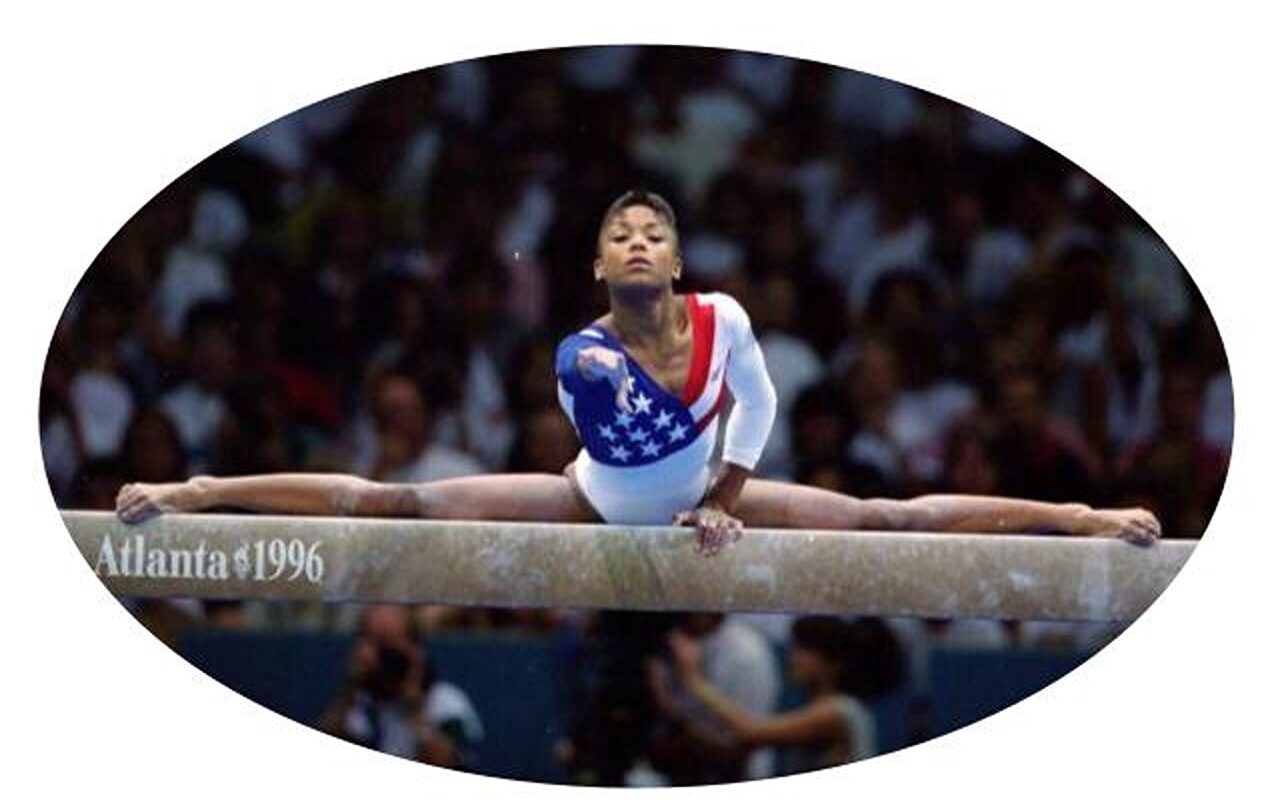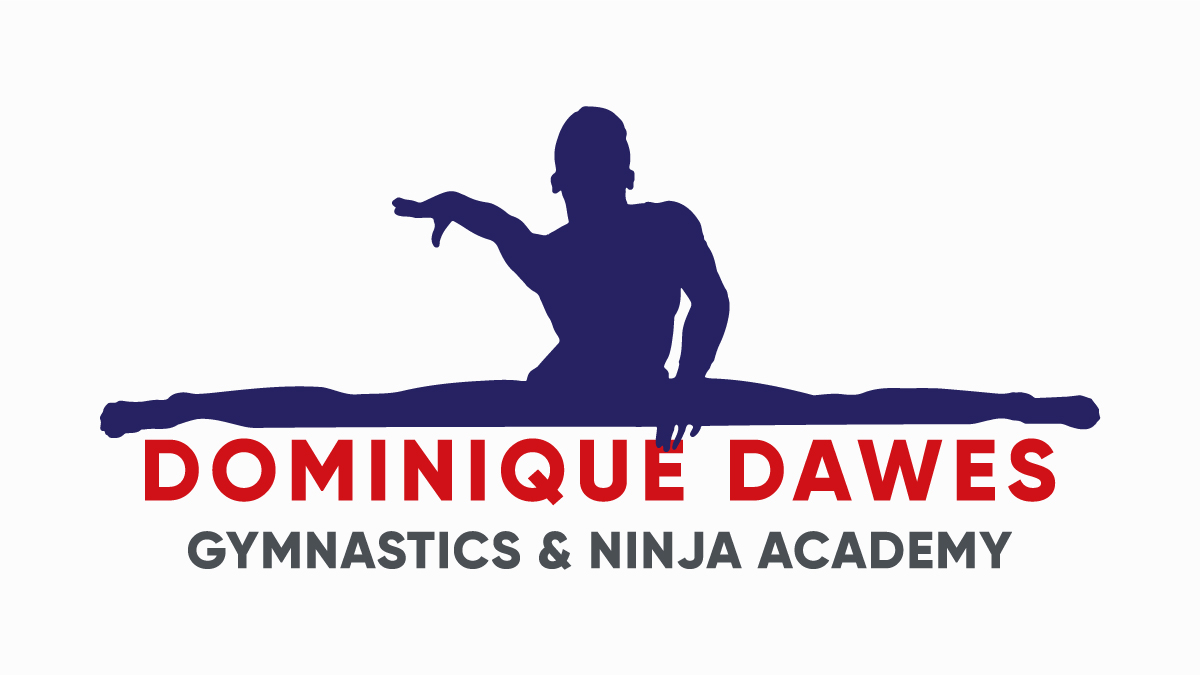Sometimes, life catches up to you and your family, making you miss gymnastics classes here and there. Or maybe your child wants to try a few gymnastics exercises before committing to a full class. Either way, we’d love to help you and your child have a fun, easy experience in the comfort of your home.
In the following blog, we’ll bring Dominique Dawes Gymnastics & Ninja Academy’s nurturing environment directly to you. Everyone deserves to have fun on the mat, even in a living room or bedroom. Let’s get started!
Safety First: Tips for Safe Gymnastics at Home
Before the fun begins, let’s make sure you and your child have a safe environment and mindset. Look around the room and identify sharp corners, dangerous areas, and stray items such as cords or flower pots. If an item can lead to injury, we recommend moving it out of the way.
Now the stage is set! Let’s create some positive expectations for your gymnastics workout at home:
- Only have your child attempt exercises that are safe and comfortable for them.
- Take extra care when trying new exercises.
- Be supportive when an exercise doesn’t work out perfectly. Mistakes are an important part of learning!
- Start with simple movements and goals, then try more advanced exercises as your child learns.
Beginner Gymnastics Exercises Structure
Here’s a simple roadmap to have a great gymnastics workout at home:
- Warm up with 5 to 10 minutes of cardio. Your child can do jumping jacks, jog in place, or hop on a treadmill—consider suggesting multiple options so your child can take the lead.
- Practice basic gymnastics drills for beginners. Take 15 to 20 minutes for this—your child could try planks, stretches, and balance exercises.
- Perform low-stakes strength training. Building strength is key to becoming comfortable with most gymnastics exercises. Bodyweight exercises like push-ups, squats, and lunges will help your child easily transition into recreational gymnastics, where students can learn at their own pace. We recommend doing 2 or 3 sets of exercises with 10 to 20 repetitions each.
- Stretch for 15 to 20 minutes. Focused, intentional stretches will prevent soreness and help your child perform more advanced gymnastics exercises in the future. Place emphasis on hamstrings, hips, and back muscles.
- Time to Relax. Recovery is perhaps the most important part of your child’s gymnastics routine. Be sure they relax their muscles and perform comfortable stretches.
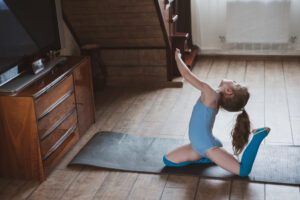
Top Beginner Gymnastics Exercises
Now, let’s have some fun! Here are some great beginner gymnastics moves to do at home. These are just the tip of the iceberg—if your child loves the following exercises, it may be time to sign up for our gymnastics classes in Clarksburg, Rockville, or Columbia.
1) Balancing on One Foot
It all starts with good balance. Let’s help your child grasp this foundational aspect of gymnastics.
Have your child start on the floor, with no elevated surface. They should lift one leg off the ground and hold it in the air for at least 5 seconds. They can hold their arms above their head or horizontally (in a T position) to improve balance. There’s no right or wrong way to elevate the leg—it can be straight, bent, or held up.
2) Scales
Scales are another great way to improve balance. Good scale form will also boost your child’s flexibility and strength, helping them grow in their gymnastics journey. Scales are a natural progression from balancing on one foot: your child will need to lift one leg directly in front of, behind, or beside them, then hold their balance for as long as possible. Let’s take a closer look at the three types of scale. Each type has two main movements, labeled “A scale” and “B scale.”
3) Front Scale
Your child can perform a front scale by extending their leg in front of them. To perform an A scale, they need to form a 90-degree angle (or less) and hold this for at least 2 seconds. They can transition into a B scale by entering a relevé on their supporting leg. This means your child needs to rise onto the tips of their toes.
4) Back Scale
A back scale is the opposite of a front scale, but it is just as important for developing your child’s balance and strength. Back scales often make children feel like a bird or plane—they extend their arms to the side and lift one leg behind them. Here, an A scale is achieved by forming a 90-degree angle or greater with the lifted leg. A B scale is reached by performing a relevé with the support leg.
4) Side Scale
Side scales are one of the tougher gymnastics drills for beginners, but they’re certainly worth trying. A side scale is achieved by extending one leg to the side. A scales form a 90-degree angle or less for 2 seconds, while B scales will need the 90-degree angle and a relevé on the support leg.
5) Straddle Sit
Straddle sits are one of the most beneficial gymnastics moves to do at home, helping young gymnasts prepare for jumps on trampolines, beams, and floors. To perform a straddle sit, your child should sit with their back straight, place their hands on the ground in front of them, and move each of their legs outward. Once they reach a comfortable stretch, they should point their toes and angle their knees upward. After this point, they can try to raise their arms over their head or legs.
6) Spider-Man Against the Wall
Handstands are not as easy as they look—they can take hours of practice and require trained balance. Let’s ease into handstands by becoming superheroes! You’ll want to watch your child and be a safety net while they perform Spider-Mans. Here’s a quick guide for safely performing this movement:
- Start with your back against the wall.
- Place your hands on the floor in front of you.
- Place a foot on the wall one at a time.
- Carefully bring hands closer to the wall as feet step higher up on the wall.
- Stop moving your hands and feet once your belly touches the wall.
- Look at your hands while in this position.
- Tighten up muscles and focus for as long as possible before coming down.
7) Jump to Safe Landing
Let’s help your child develop a safe landing form. Have them start on a sturdy, safe surface about two or three feet above the floor. Then, have them jump and lessen the impact by bending their knees and rising into a standing position. Practice makes perfect—eventually, their landings will look and feel fluid.
8) Consecutive Jumps
Once your little gymnast is comfortable with landing, have them go for two! Jumping immediately after landing helps prepare gymnasts for advanced movements down the line. With the right amount of control, your child can spring into more than just a second jump: have them try three, four, or five jumps as they become more comfortable.
9) Forward Roll
Forward rolls are tons of fun and incredibly important for a gymnast’s development. Your child should start in a standing position, then crouch and place their hands shoulder-width apart on the ground. Then, they need to tuck their head, lean forward, and lift their hips to roll. Your child should start by rolling onto their shoulders/upper back and end in a seated position.
10) Splits
Skilled gymnasts use splits in various leaps and jumps, so it’s important to start working on these early. Your child can improve their splits through a series of stretching and kicking exercises. They can try forward, back, and side kicks, where they keep their arms extended and chin up. These kicks should be as high as possible, but make sure your child remains comfortable. Have them perform kicks across the room, with about 10 repetitions, and then have them repeat this.
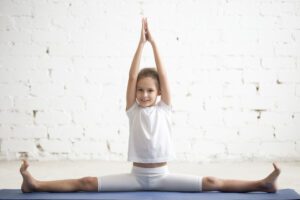
What to Do After Gymnastic Exercises
Now, it’s time to cool down and relax. Make sure your child drinks plenty of water, stretches to reduce tension in their body, and takes it easy for a little bit. They’ve had a great workout, and now they deserve great rest.
Ready for the Next Step in Gymnastics? Explore Our Classes
The exercises above are great gymnastics moves to do at home, and they help prepare your child for the real deal. Our team at Dominique Dawes Gymnastics & Ninja Academy will make sure your child is ready for the wonderful world of gymnastics—we take an approach that nurtures the whole child, helping them grow physically, emotionally, and socially.
As a three-time Olympic gymnast, our founder, Dominique Dawes, learned that the key to success is having a great time. When we laugh together, we learn together. By learning together, we grow to become hard workers and great teammates.
Gymnastics should be fun and peaceful, not toxic and stressful. If your child is ready to make friends, become stronger, and have the time of their life, we’d love to have them join our classes!
Book Your Child’s Spot for Gymnastics & Ninja Classes Today
Inside every child is a gymnast or ninja just waiting to emerge. With proper guidance, they’ll find a healthy passion that keeps them laughing and learning for years on end. Contact our team to learn how our gymnastics and ninja classes breed success, positivity, and healthy lifestyles. We can’t wait to meet you!
Contact Information
Have Questions or Concerns? Call Our Office at (240)-690-4138
Our Clarksburg Location
22530 Gateway Center Drive
Clarksburg, MD 20871
Recreational Gym – Suite 500
Preschool and Ninja Gyms – Suite 700
Our Rockville Location
5626 Randolph Road
Rockville, MD 20852
